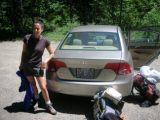Last Friday, Bus Nerd, Chicklet, and I headed to Portland (on the train!) to participate in the Towards Carfree Cities conference. (Actually, I was going to participate in the conference, and Nerd and Chicklet were going to hang around Portland. Minor detail.) It turned out to be a bad day to attend the conference (most of the good events happened earlier in the week) but a good day to learn more about getting around Portland. (Disclaimer: I can count on two hands the number of times I’ve been to Portland–and on one hand the number of times I’ve been as an adult. Forgive me if this is old news to you Oregonphiles.)
I’ve been known to roll my eyes when folks start going on about how fabulously bikeable, walkable, and transit-friendly Portland is. It’s not that I don’t believe it; it’s just that I’m a bit of a Seattle partisan, and all that Portland love brings out the hater in me. Mostly, though, it makes me wish that my beloved hometown had grown smarter, with transit and biking as a focus, instead of ballooning into such a bloated, sprawling mess. But I digress.
I have to give credit where credit is due, and Portland deserves some credit for thinking outside the car. For starters, their train station is actually clean and inviting. (When is King Street’s interminable “remodel” going to be finished, anyway?) And, of course, there’s the bike thing. I could tell almost immediately that Portland is much more bikeable than Seattle (bike paths, bike parking, and bike nerds everywhere!), but I didn’t try to get around by bike while I was there (hey, I know my limits), so I can’t really speak about it.
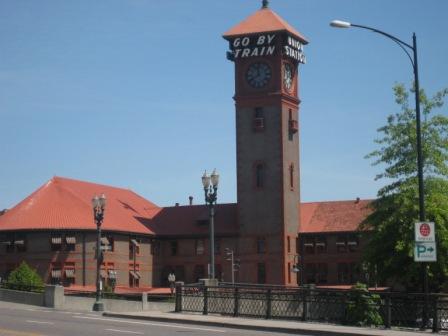
Portland’s train station (the inside ain’t half bad, either)
On to transit:
I’m extremely impressed by what Portland has going on. Though I was only there for one day, and I didn’t really venture beyond the downtown/waterfront area, I can say with confidence that Portland’s system (TriMet) is much more usable (and useful) than Seattle’s. Some reasons why:
• The website! I could write an entire post just about this. It is clearly organized, with easy access to the information riders need (trip planner, how to ride, maps, etc.). To find out how to get to the conference location, I typed “Amtrak Station” and “Portland State University” into the trip planner entry fields on the home page and (immediately, without errors or a list of obscure locations I might have meant to enter) got several useful itineraries, complete with fare information, links to maps, and detailed information about the stops, including the stop IDs. All transit websites should be this good.
• The bus stops. At the big stops, the shelters tell you the intersection where the stop is located, so you don’t have to walk to the corner and try to read the signs. The signs tell you: the stop ID (which, unlike in Seattle, you can use for TriMet’s version of Tracker or the automated phone system), if you’re in the Fareless Square, and if the stop has frequent service.
• The streetcar. Getting around the center city on that thing is a cinch. Since it’s a fixed route and there are maps available almost everywhere, you can (and we did) use it to get from the waterfront to PSU to Powell’s without knowing a single thing about Portland or its transit system. No asking the driver of whatever route happens to show up, “How far do you go down 3rd?” No hassles trying to figure out how to get from one corner of downtown to another without a long, uphill walk (favored by bus chicks but few others), a transfer, or a cab ride.
(Note: I might get my bus chick credentials revoked when I admit that I haven’t yet ridden the SLUT, but there it is. Yes, Chicklet keeps me pretty busy, and blah, blah, blah, but the truth is, it doesn’t go anywhere I need to be–or, at least, it doesn’t go anywhere I’ve needed to be since it began operating. I’ll check it out before the summer’s over, but to clarify: This is not a comparison of Portland’s streetcar and Seattle’s [except perhaps to suggest that Portland’s is more useful to a larger number of people] but rather, a comparison of how easy it is to get around the cities’ downtown areas.)
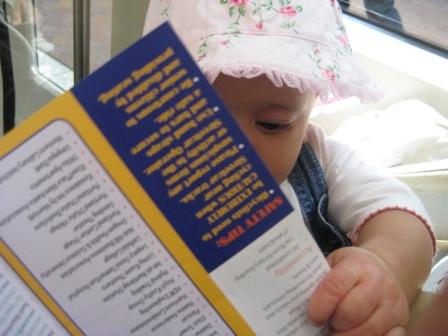
Portland Streetcar: So easy, a baby could ride.
• Digital signs inside vehicles. We saw these on the streetcar and on buses. They are very helpful if you don’t know a city (and don’t have a husband who uses a personal GPS device with his nerd phone), are in an unfamiliar neighborhood, or can’t see out the window.
• MAX light rail. I didn’t ride it, but it’s there. Enough said.
Other stuff of note:
• The streetcar had audio ads over the automated PA. They went something like this: “State street station, brought to you by the State Street Grill.” It was kind of creepy, but interesting nonetheless; I’m always keeping my eyes out for new ways to fund transit. Most of the ads I heard were for new condo developments. And speaking of…
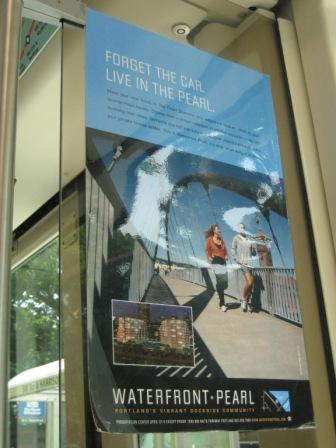
“Forget the car. Live in the Pearl.”
• We ran into Vic and Julia from Sustainable Ballard/Undriving Ballard (he-ey, ladies!) on the streetcar. They were in town for the conference as well. Julia even presented earlier in the week.
Portland isn’t perfect, by any stretch. Like most (OK, all) US cities, it still feels very car-dominated. I’m also aware that, despite their proximity, Seattle and Portland are very different cities–in part because of differences in size and geography, and in part because of better planning on Portland’s part. Still, what I wouldn’t give to have a little of what they’ve got around here. How about we start with a new and improved website?
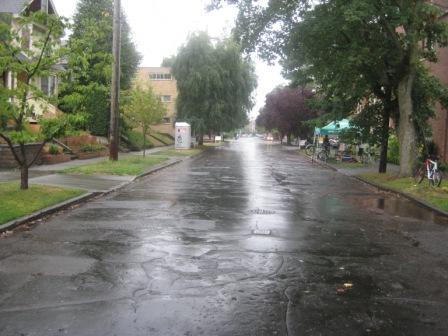

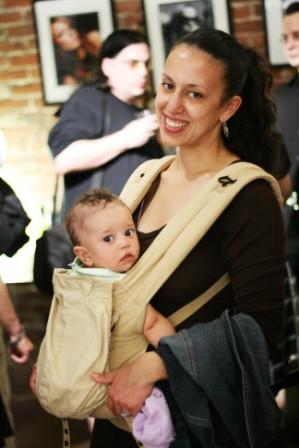
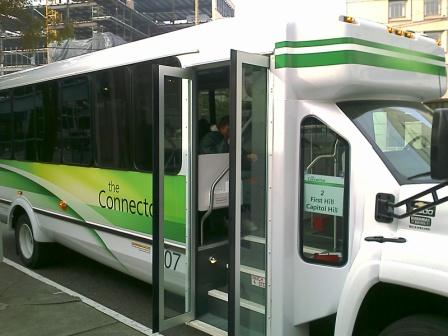
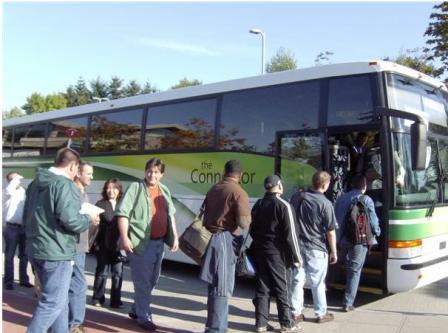
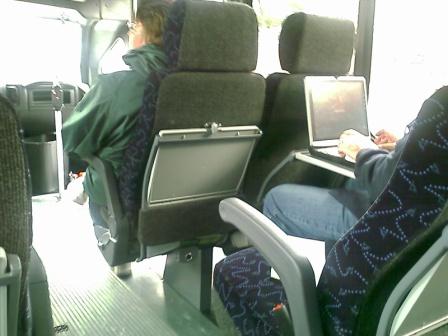
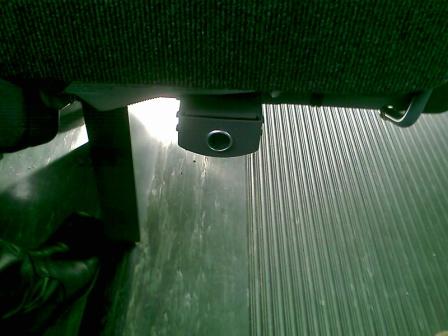
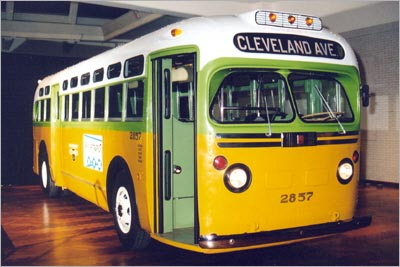
 One of my favorite places on this earth is
One of my favorite places on this earth is 